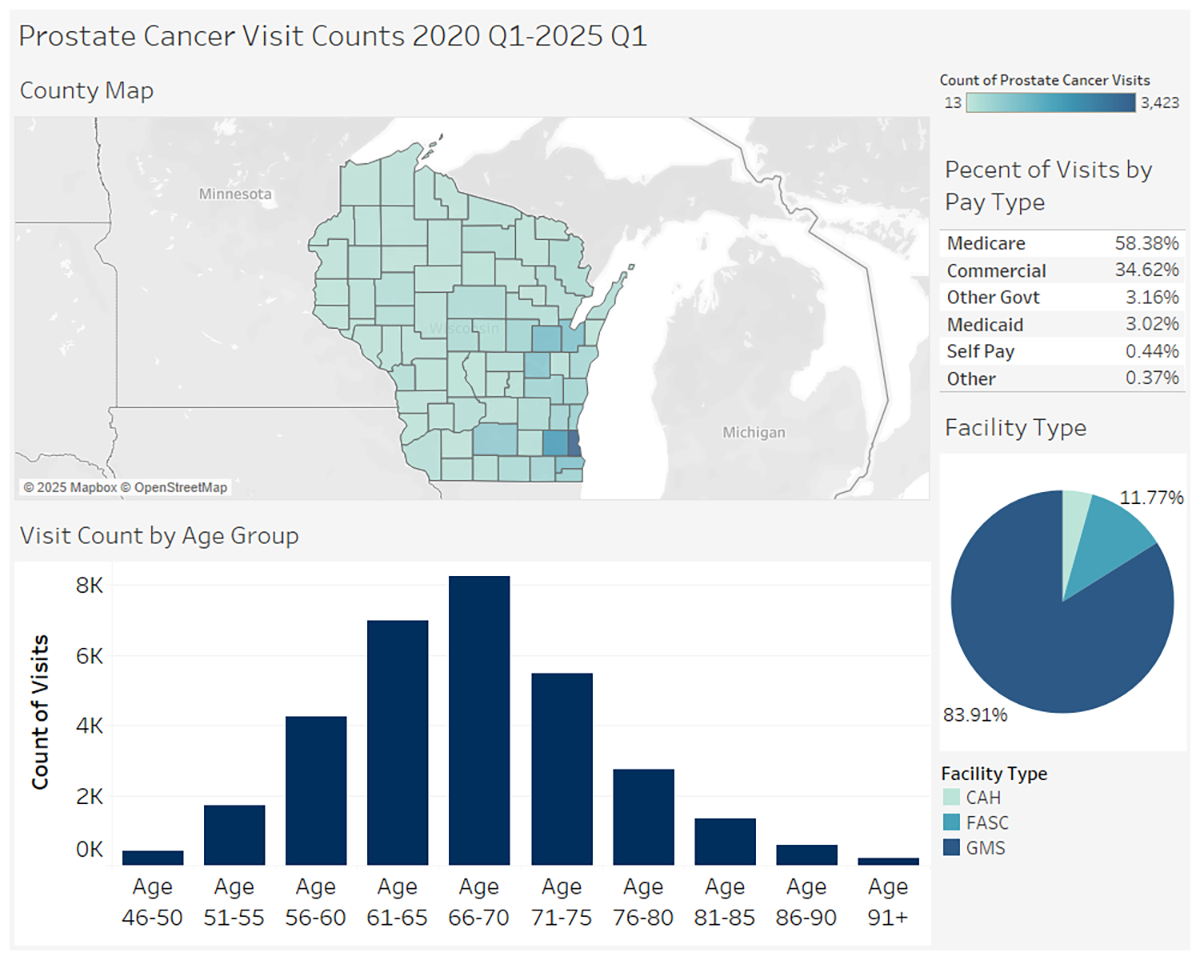Click here to view past issues
IN THIS ISSUE
- WHA Council on Workforce Development Explores Career Pathways
- Potentially Avoidable Emergency Department Visits Dashboard Update
- Wisconsin Hospitals State PAC & Conduit Update
- GUEST COLUMN: The Value of Getting it Right: Why Employers Can’t Afford to Stay Silent
- Secure Your Spot Today for Important Hospital Board Education Event
- Fast Facts from the WHA Information Center: September is Prostate Cancer Awareness Month
EDUCATION EVENTS
Jan. 6, 2026
Age-Friendly Webinar Series Featuring Advocate HealthJan. 14, 2026
Caring for Wisconsin’s Caregivers Well-Being First Champion Challenge for Credentialing KickoffJan. 28, 2026
2026 WHA Health Care Leadership AcademyClick here to view education event calendar
View more issues of The Valued Voice
Sign Up for WHA's Newsletter
Fast Facts from the WHA Information Center: September is Prostate Cancer Awareness Month
September is recognized as Prostate Cancer Awareness Month. Prostate Cancer is the second leading cause of death in men after lung cancer. The prostate gland is found only in men and is located below the bladder. According to the Centers for Disease Control and Prevention, 13 out of 100 American men will be diagnosed with prostate cancer in their lifetime. The American Cancer Society estimates that in 2025, the number of new prostate cancer cases in the United States will be roughly 313,000. And while they also mention that 1 in 44 men will die of prostate cancer, the death rate has decreased by almost half from 1993 to 2022. This is most likely due to increased screenings and treatment advances. In more recent years, however, there has been a slight uptick in case numbers. The most common risk factor for being diagnosed is age—the older a man is, the greater chance of prostate cancer.
The WHA Information Center analyzed prostate cancer-related visits from January 2020-March 2025. The age group with the highest number of visits for prostate-related cancer is 66 to 70, with the average age being 68 years old. The American Cancer Society states that the chance of being diagnosed increases after age 50, and almost 6 in 10 cases are found in men 65 years and older. Since 2018, there has been a slow rise in visits related to prostate cancer, which follows the national trend.

Here are some of the most common risk factors for men to develop prostate cancer:
- Age: the chance of being diagnosed with prostate cancer rises rapidly after age 50.
- Race/Ethnicity: African American men and Caribbean men of African ancestry are more likely to develop prostate cancer than men of other races and at a younger age. Prostate cancer occurs less often in Asian American, Hispanic and Latino men.
- Geography: Prostate cancer is more commonly found in North America, Australia, northwestern Europe and some Caribbean islands. It is less common in Asian, Africa, Central and South America.
- Family History: The risk for developing prostate cancer is higher for men who have relatives that were diagnosed with the disease. Having a father or brother with prostate cancer more than doubles a man’s risk of developing this disease.
Fast Facts from the WHA Information Center: September is Prostate Cancer Awareness Month
September is recognized as Prostate Cancer Awareness Month. Prostate Cancer is the second leading cause of death in men after lung cancer. The prostate gland is found only in men and is located below the bladder. According to the Centers for Disease Control and Prevention, 13 out of 100 American men will be diagnosed with prostate cancer in their lifetime. The American Cancer Society estimates that in 2025, the number of new prostate cancer cases in the United States will be roughly 313,000. And while they also mention that 1 in 44 men will die of prostate cancer, the death rate has decreased by almost half from 1993 to 2022. This is most likely due to increased screenings and treatment advances. In more recent years, however, there has been a slight uptick in case numbers. The most common risk factor for being diagnosed is age—the older a man is, the greater chance of prostate cancer.
The WHA Information Center analyzed prostate cancer-related visits from January 2020-March 2025. The age group with the highest number of visits for prostate-related cancer is 66 to 70, with the average age being 68 years old. The American Cancer Society states that the chance of being diagnosed increases after age 50, and almost 6 in 10 cases are found in men 65 years and older. Since 2018, there has been a slow rise in visits related to prostate cancer, which follows the national trend.

Here are some of the most common risk factors for men to develop prostate cancer:
- Age: the chance of being diagnosed with prostate cancer rises rapidly after age 50.
- Race/Ethnicity: African American men and Caribbean men of African ancestry are more likely to develop prostate cancer than men of other races and at a younger age. Prostate cancer occurs less often in Asian American, Hispanic and Latino men.
- Geography: Prostate cancer is more commonly found in North America, Australia, northwestern Europe and some Caribbean islands. It is less common in Asian, Africa, Central and South America.
- Family History: The risk for developing prostate cancer is higher for men who have relatives that were diagnosed with the disease. Having a father or brother with prostate cancer more than doubles a man’s risk of developing this disease.
IN THIS ISSUE
- WHA Council on Workforce Development Explores Career Pathways
- Potentially Avoidable Emergency Department Visits Dashboard Update
- Wisconsin Hospitals State PAC & Conduit Update
- GUEST COLUMN: The Value of Getting it Right: Why Employers Can’t Afford to Stay Silent
- Secure Your Spot Today for Important Hospital Board Education Event
- Fast Facts from the WHA Information Center: September is Prostate Cancer Awareness Month

